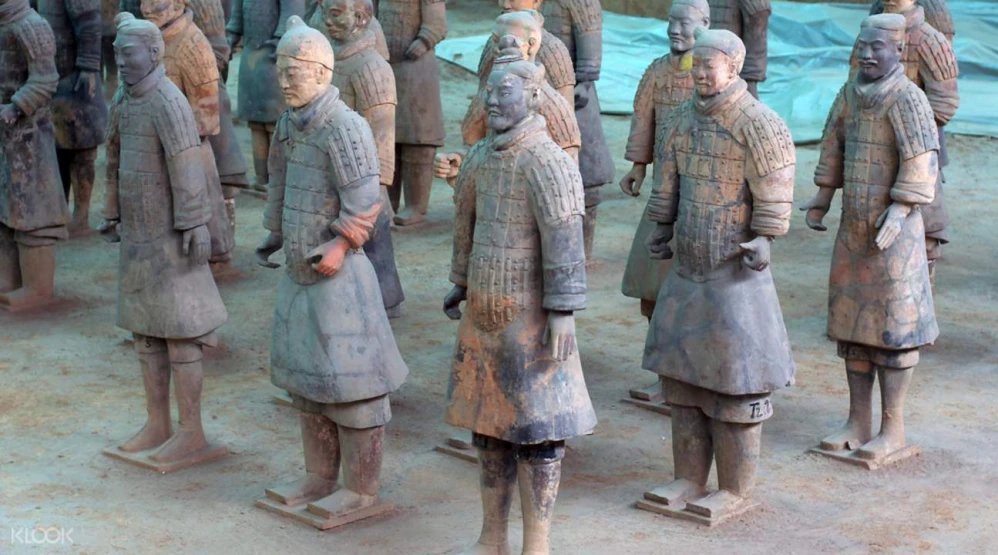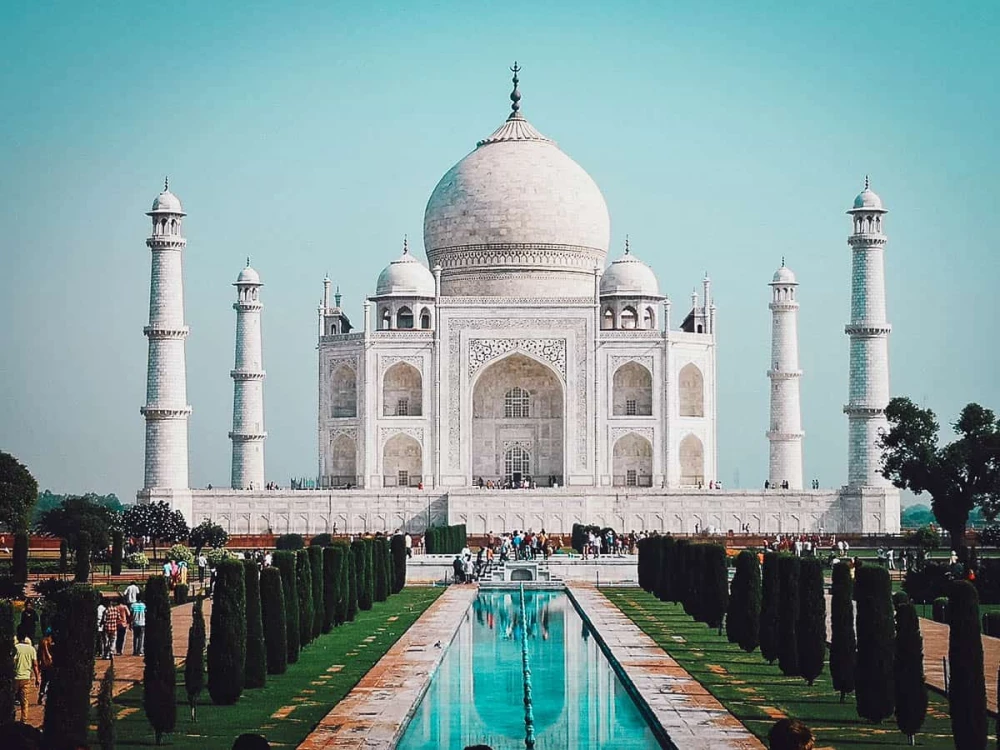
Sri Lanka
Region map
General information
Sri Lanka Reopening
Sri Lanka has fully reopened its borders as of 01 March 2022. Tourists are welcome back with no quarantine, no test on arrival, and just a minimum of requirements as below.
ENTERING SRI LANKA
Fully vaccinated travellers can travel to Sri Lanka, no quarantine or on-arrival PCR test needed. Any vaccination accepted by the country of origin is acceptable. An original copy of the vaccination certificate in English must be produced on arrival.
Unvaccinated travellers can still enter Sri Lanka, but must stay under the protection of the 'Tourism Bio Bubble' for a duration of 7 nights/8 days.
For additional details on entering view the official tourism website (Sri Lanka Tourism).
VISA REQUIREMENTS
All travellers to Sri Lanka should apply for an Electronic Travel Authorisation (eTA) visa online before arriving. This is delivered electronically and tied to your passport, valid for up to a 30-day visit. It takes up to 3 business days to process.
From October 2021 on arrival ETA’s for Sri Lanka can be done, though it is still recommended getting this online to avoid delays.
Travellers are also required to complete a health declaration form before arriving in Sri Lanka. Each traveller must have their own form filled out. Beginning January 1st 2022, travellers will be required to complete the health declaration form online and upload the relevant documents, such as vaccination records, negative pre-departure COVID-19 test results, and passport data page, before boarding. A QR Code will be issued and must be displayed digitally or on paper. Complete the form here.
NEGATIVE COVID RESULT
From March 1st 2022, all fully vaccinated travellers are exempt from pre-departure Covid testing! This means no PCR or rapid test is needed to enter, as long as you have proof of being double vaccinated.
PROOF OF INSURANCE
When applying for the visa, travellers are required to pre-purchase mandatory COVID-19 insurance cover for travel in Sri Lanka. This can be arranged here at $12 USD to cover one month.
QUARANTINE
Fully vaccinated travellers can stay at any type of accommodation and travel freely with no quarantine or on-arrival PCR test required!
Those not vaccinated must must stay under the protection of the 'Tourism Bio Bubble' for a duration of 7 nights/8 days and do multiple PCR tests to confirm they are Covid negative. All facilities of the hotel are made available to the guests and they can visit approved tourist sites.
General information
The Pearl of the Indian Ocean, Sri Lanka has regained that name after its bitter civil conflict ended in 2009.
Endless beaches, timeless ruins, welcoming people, oodles of elephants, rolling surf, cheap prices, fun trains, famous tea and flavourful food make Sri Lanka irresistible
Beautiful beaches abound, especially around the southern coast. Steamy tropical rain forests are home to elephants, leopards, dugong and a massive population of migratory birds. The cities offer a glimpse into the influence of Dutch, Portuguese and British colonial times; Galle presents the finest example of an old Dutch fort, whilst the profusion of cricket pitches is the best indicator of Britain’s legacy. Mostly, though, Sri Lanka remains in tune with its own heritage; they still make their curries hot enough to turn pale white folk into a crimson red.
The Undiscovered Country
You might say Sri Lanka has been hiding in plain sight. Scores of travellers have passed overhead on their way to someplace else, but years of uncertainty kept Sri Lanka off many itineraries.
Now, however, all that has changed. The country is moving forward quickly as more and more people discover its myriad charms. Lying between the more trodden parts of India and Southeast Asia, Sri Lanka’s history, culture and natural beauty are undeniably alluring. It’s the place you haven’t been to yet, that you should.
So Much in So Little
Few places have as many Unesco World Heritage Sites (eight) packed into such a small area. Sri Lanka’s 2000-plus years of culture can be discovered at ancient sites where legendary temples boast beautiful details even as they shelter in caves or perch on prominent peaks. More recent are evocative colonial fortresses, from Galle to Trincomalee.
Across the island, that thing that goes bump in the night might be an elephant heading to a favourite waterhole. Safari tours of Sri Lanka’s pleasantly relaxed national parks encounter leopards, water buffaloes, all manner of birds and a passel of primates.
It’s So Easy
Distances are short: see the sacred home of the world’s oldest living human-planted tree in the morning (Anuradhapura) and stand awestruck by the sight of hundreds of elephants gathering in the afternoon (Minneriya). Discover a favourite beach, meditate in a 2000-year-old temple, exchange smiles while strolling a mellow village, marvel at birds and wildflowers, try to keep count of the little dishes that come with your rice and curry. Wander past colonial gems in Colombo, then hit some epic surf.
Sri Lanka is spectacular, affordable and still often uncrowded. Now is the best time to discover it.
Rainforests & Beaches
When you’re ready to escape the tropical climate of the coast and lowlands, head for the hills, with their temperate, achingly green charms. Verdant tea plantations and rainforested peaks beckon walkers, trekkers and those who just want to see them from a spectacular train ride.
And then there are the beaches. Dazzlingly white and often untrodden, they ring the island so that no matter where you go, you’ll be near a sandy gem. Should you beat the inevitable languor, you can surf and dive world-class sites without world-class crowds. And you’re always just a short hop from something utterly new. Let's discover Sri Lanka with Adventure Asia!
Sri Lanka itineraries

18 days summer family tour of Sri Lanka
For families who enjoy nature, wildlife, beaches, culture and have the privilege of long holidays, this is the ultimate family adventure in Sri Lanka, which covers highlights, off the beaten experiences, unique local experiences hosted by locals, wildlife encounters at the very heart of the wilderness, exploration of historical ruins and temples. Visit an indigenous tribal village and also a beach stay on the east coast, where you would be able to snorkel to explore the underwater wonders.
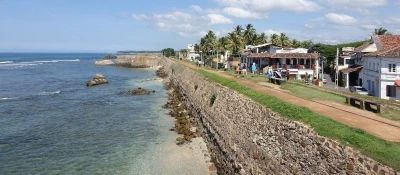
Sri Lanka Higlights Tour
Explore the main attractions of Sri Lanka on a whistle-stop ten days trip that starts out in Galle and takes in a number of historical and religious attractions- a number of which are listed as UNESCO World Heritage sites. From the spectacular views at Sigiriya and impressive sculptures at Polonnaruwa to the beautiful tea plantations around Nuwara Eliya and the famous Yala National Park, you will really feel like you’ve touched every corner of this exciting destination on this guided tour.
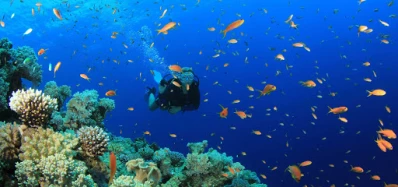
Highlights of Sri Lanka 21 days summer tour
This tour takes you to Sri Lanka’s most famous cultural sites and also includes a safari and plenty of activities. You will end up on the east coast beaches, which are ideal for a visit during the European summer holidays when there should be plenty of sunshine. You will explore the country with a driver/guide, and a wide range of different accommodation types is available. We can adapt any aspect of this itinerary, to ensure that it is suitable for the ages of your children and your travel dates.
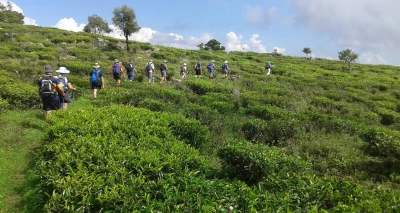
The best Hiking tour of Sri Lanka
For the keen hiker, there are a plethora of opportunities awaiting in Sri Lanka’s diverse and luscious hill country. The beautiful area of Haputale and Diyatalawa, located in the hill country of Sri Lanka, provides a base from which to try out a wide range of hiking and trekking tours through the jungle across tea estates and mountains. The numerous waterfalls in Sri Lanka are another key attraction that allows hikers and trekkers to enjoy a refreshing dip en-route!
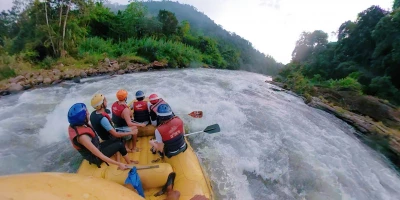
Highlights of Sri Lanka Winter Tour
There are very few destinations that can match the sheer diversity of Sri Lanka. From white sand coastlines, misty hill stations, legendary temples, to lush national parks, the tropical island packs in over 8 UNESCO World Heritage Sites and 8,000 sq km of nature reserves. Take two weeks to explore the bustling capital before swapping city sights for the Cultural Triangle, with its tranquil paddy fields and ancient Kingdoms. Climb the Sigiriya Fortress in time for sunset and immerse yourself in the local Tea Culture, before some rest and rejuvenation time on the south coast’s beautiful sandy beaches.

Sri Lanka cycling and trekking tour
Ride through tea plantations, Kayak down rivers, and hike to ancient fortresses on this fitness-focused adventure from Negombo to Colombo. Sri Lanka is one of Asia’s most exciting destinations and it’s not hard to see why. With pristine coastline, ancient ruins, rugged peaks, and wildlife-filled national parks, it’s a dream for travelers who like to get active. Explore the country’s premier sites while wandering through the wilds on this Sri Lankan experience.
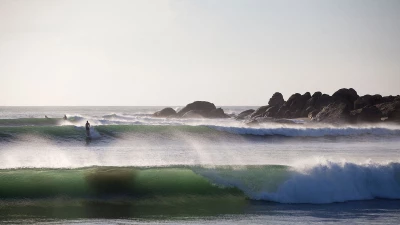
Sri Lanka Winter family tour
A well-rounded family adventure holiday, covering many aspects such as wildlife, agriculture, surfing beaches, culture, history, and adventures, where you will meet with local communities. Learn about monkeys, walk to Elephant habitats, learn about farming fruits and vegetables and take part in a treasure hunt in a village to interact with locals, to take back wonderful memories and share the knowledge with your friends back home. This is not just a holiday where you go from one hotel to another, but an experiential family vacation.
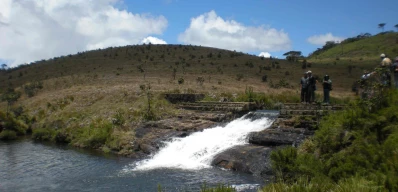
Summer Family Adventure in Sri Lanka
With its friendly people, good hotels and manageable size, Sri Lanka are the perfect family destination. From national parks and misty hill stations to exquisite cultural sites and glorious sand beaches, this beautiful island is the essence of Asia. Start in Colombo before heading on safari to spot elephants in the Udawalawe National Park before continuing to the capital of the highlands, Kandy and the Udawattekele Sanctuary. Finish this unforgettable journey by spending nights relaxing on the beach at Passikudah before returning via the ‘cultural triangle’ to Colombo.

Explore rich Sri Lanka culture and history by bike
Although a compact island, Sri Lanka is incredibly diverse. Exploring on two wheels is the best way to see this rural country and to experience the way of life of its friendly people. We travel from ancient cities and the fortress at Sigiriya to the hill country towns of Kandy and Nuwara Eliya, where the cooler temperatures and lush scenery make for a relaxing ride. In many regions of Sri Lanka, the bicycle is the most common form of transport, so traveling by bike yourself is a great way to mix with the people and gain access to their world. This trip covers a substantial part of the island, taking in as much as possible of the scenic and cultural variety that Sri Lanka has to offer.

Authentic encounters and adventures in Sri Lanka
Be ready for some light adventuring, as the itinerary includes a 3-mile walk through villages and a bike ride on the back streets of Kandy. There is also hiking to be done in Sinharaja rain forest, the Hortan plains, and Ella. While this trip is all about small towns, nature and local adventures, a visit to Colombo on the final day will give you a taste of Sri Lankan urban life.

18 days summer family tour of Sri Lanka
For families who enjoy nature, wildlife, beaches, culture and have the privilege of long holidays, this is the ultimate family adventure in Sri Lanka, which covers highlights, off the beaten experiences, unique local experiences hosted by locals, wildlife encounters at the very heart of the wilderness, exploration of historical ruins and temples. Visit an indigenous tribal village and also a beach stay on the east coast, where you would be able to snorkel to explore the underwater wonders.

Sri Lanka Higlights Tour
Explore the main attractions of Sri Lanka on a whistle-stop ten days trip that starts out in Galle and takes in a number of historical and religious attractions- a number of which are listed as UNESCO World Heritage sites. From the spectacular views at Sigiriya and impressive sculptures at Polonnaruwa to the beautiful tea plantations around Nuwara Eliya and the famous Yala National Park, you will really feel like you’ve touched every corner of this exciting destination on this guided tour.

Highlights of Sri Lanka 21 days summer tour
This tour takes you to Sri Lanka’s most famous cultural sites and also includes a safari and plenty of activities. You will end up on the east coast beaches, which are ideal for a visit during the European summer holidays when there should be plenty of sunshine. You will explore the country with a driver/guide, and a wide range of different accommodation types is available. We can adapt any aspect of this itinerary, to ensure that it is suitable for the ages of your children and your travel dates.

The best Hiking tour of Sri Lanka
For the keen hiker, there are a plethora of opportunities awaiting in Sri Lanka’s diverse and luscious hill country. The beautiful area of Haputale and Diyatalawa, located in the hill country of Sri Lanka, provides a base from which to try out a wide range of hiking and trekking tours through the jungle across tea estates and mountains. The numerous waterfalls in Sri Lanka are another key attraction that allows hikers and trekkers to enjoy a refreshing dip en-route!

Sri Lanka cycling and trekking tour
Ride through tea plantations, Kayak down rivers, and hike to ancient fortresses on this fitness-focused adventure from Negombo to Colombo. Sri Lanka is one of Asia’s most exciting destinations and it’s not hard to see why. With pristine coastline, ancient ruins, rugged peaks, and wildlife-filled national parks, it’s a dream for travelers who like to get active. Explore the country’s premier sites while wandering through the wilds on this Sri Lankan experience.

Explore rich Sri Lanka culture and history by bike
Although a compact island, Sri Lanka is incredibly diverse. Exploring on two wheels is the best way to see this rural country and to experience the way of life of its friendly people. We travel from ancient cities and the fortress at Sigiriya to the hill country towns of Kandy and Nuwara Eliya, where the cooler temperatures and lush scenery make for a relaxing ride. In many regions of Sri Lanka, the bicycle is the most common form of transport, so traveling by bike yourself is a great way to mix with the people and gain access to their world. This trip covers a substantial part of the island, taking in as much as possible of the scenic and cultural variety that Sri Lanka has to offer.

Sri Lanka family holiday in 12 days winter
Naturally gorgeous, culturally captivating and steeped in mysticism. Sri Lanka makes for a wonderful introduction to both travel and the Indian subcontinent for children and adults alike. Embark on an 12-day family tour and discover temples carved from the cliffs, fortresses built on boulders and wildlife-rich parks. Expose your family to different ways of life while cycling through peaceful villages and touring working tea plantations. Wonders of wildlife when you go safari in search of wild elephants, deer, and crocodiles. Chill out by the beach in Mirissa while the kids are playing with other young travelers on the tour. Educational, active and leisurely paced, this trip is everything you could want in a family getaway.
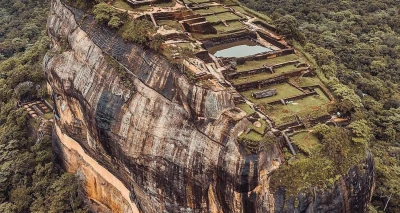
A quick tour of Sri Lanka in 7 days
Discover and visit all the top highlights of Sri Lanka in a 7-day tour that will take you to Negombo, Sigiriya, Kandy, Ella, the South West beaches and Colombo. Cover key attractions such as the Sigiriya Lion Rock as well as the Lion Rock view from Pidurangala, the Kandy Temple of the Tooth, the Bahirawakanda hike and the temple, the Kandy viewpoint, the scenic train journey from Kandy to Ella, the spectacular Nine arched bridges and the little Adam’s peak at Ella is culminating in some free time on the beach sides to relax and unwind.

Highlights of Sri Lanka 14 days summer tour
Welcome to Sri Lanka, the land that has it all in store for you. Flow from the colonial coast town of Negombo inland to the ancient cultural triangle, climb the Sigiriya Rock Fortress and dip into the cultural life in lively, yet laid back Kandy. Board the train, as it climbs through the pine forests and lush green tea plantations in the hill country. Proceed to the World’s End, then to Ella, high above the valley, where you will get your hands on the local cuisine. Head southwards, close to the elephants in the Uda-walwe National park. Relax on the sandy beaches outside Tangalle and get close to the mighty blue whales in Mirrisa. Trail the streets of colonial Galle, before the city life of Colombo, welcomes you for one last day. Explore the heart and soul of Sri Lanka. Go beyond the ordinary.

21 days Summer Family Adventure tour in Sri Lanka
This summer family adventure tour includes loads of options for different ages and energy levels, ensuring a really special experience for everyone. With hands-on activities, fuss-free relaxation, engaging cultural highlights, eye-popping wildlife experiences and chilled-out beach time, you’ve got all the ingredients for creating some unique, grin-inducing family memories.
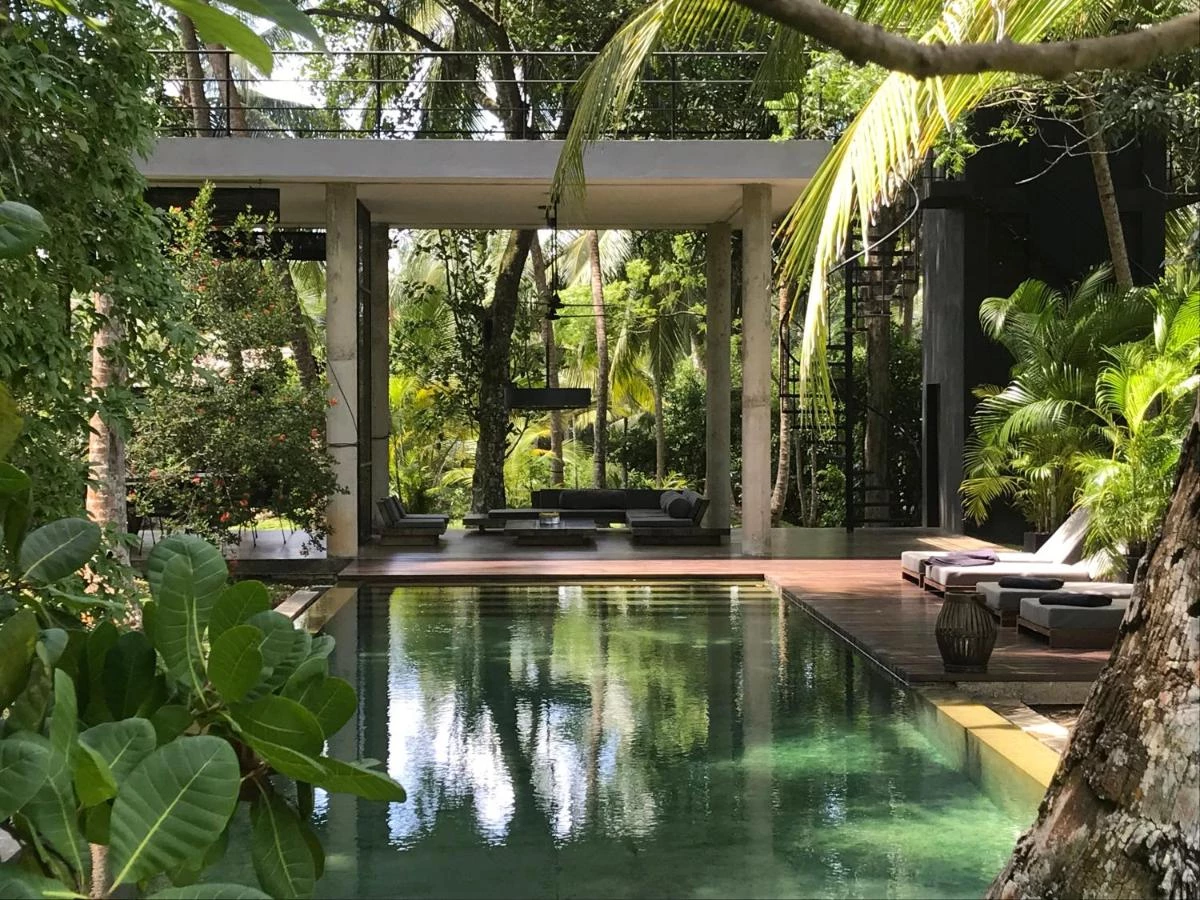
KAJU GREEN eco lodges - Unawatuna beach
An exclusive, private island adjacent to Sri Lankan Bird and Wildlife Sanctuary Eluwila. Our passion for nature drives a clear focus to minimising the environmental footprint in an ecolodge designed to rejuvenate your spirit and body.
Kaju Green has been born out of our desire for simple, quality design which maximises natural light, airflow sanitation and lush landscapes to provide each bungalow with needed privacy. Leaving cold European winters for a tropical haven, your unwinding and relaxation flow naturally as your body absorbs the optimal temperatures and humidity.
KAJU GREEN eco lodges - Unawatuna beach
An exclusive, private island adjacent to Sri Lankan Bird and Wildlife Sanctuary Eluwila. Our passion for nature drives a clear focus to minimising the environmental footprint in an ecolodge designed to rejuvenate your spirit and body.
Kaju Green has been born out of our desire for simple, quality design which maximises natural light, airflow sanitation and lush landscapes to provide each bungalow with needed privacy. Leaving cold European winters for a tropical haven, your unwinding and relaxation flow naturally as your body absorbs the optimal temperatures and humidity.
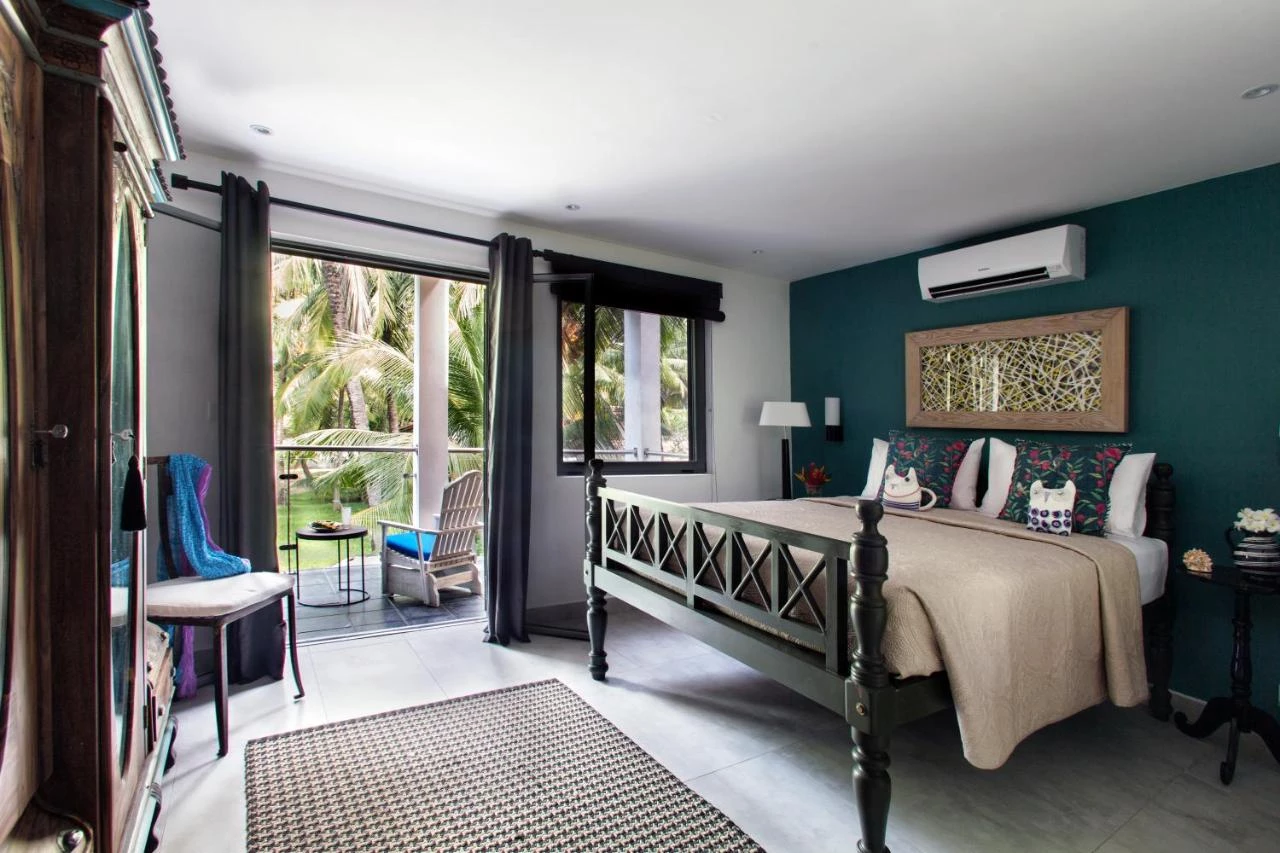
Owl and the Pussycat Hotel & Restaurant - Galle
Owl and the Pussycat is a new language in Sri Lankan hospitality. Inspired by the optimism of modern Sri Lanka, its positive passionate colours and generous spaces are designed to relax and delight the travellers. Our hotel is filled with an eclectic collection of books, original art, bespoke furniture that is customised for each room. Here we offer a joie de vivre that captures the spirit and simplicity of modern Sri Lanka.
Owl and the Pussycat Hotel & Restaurant - Galle
Owl and the Pussycat is a new language in Sri Lankan hospitality. Inspired by the optimism of modern Sri Lanka, its positive passionate colours and generous spaces are designed to relax and delight the travellers. Our hotel is filled with an eclectic collection of books, original art, bespoke furniture that is customised for each room. Here we offer a joie de vivre that captures the spirit and simplicity of modern Sri Lanka.
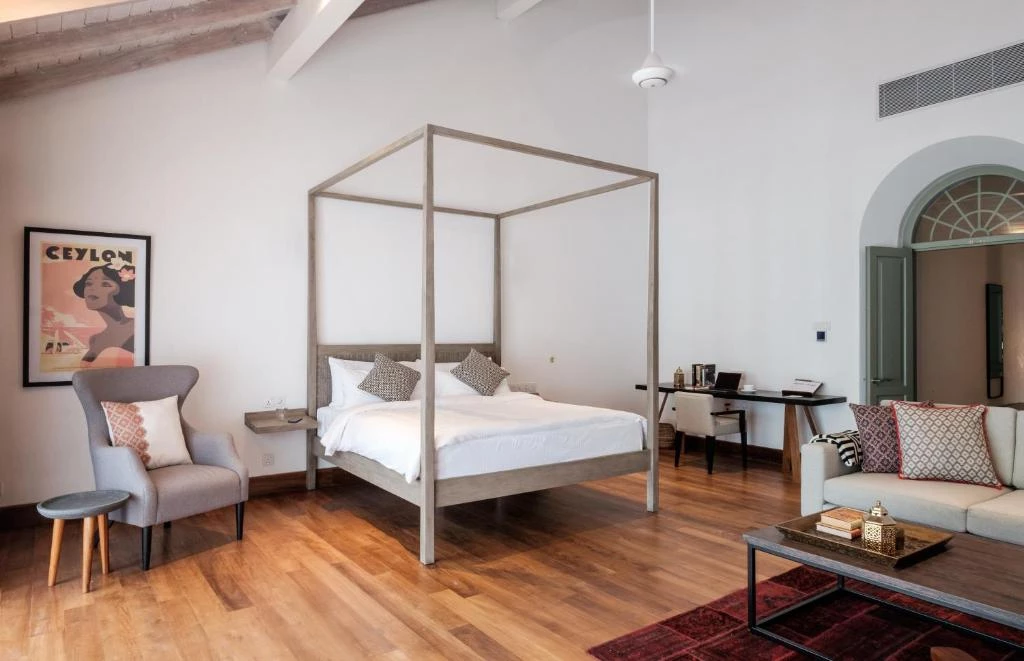
The Fort Bazaar - Galle
Begin your Galle quest at Fort Bazaar, a handsome merchant’s home-turned-boutique hotel with 18 stylish guestrooms and fresh, contemporary interiors invoking a Middle Eastern vibe. Positioned on Church Street within a UNESCO-listed 17th century fort, this spa hotel in Galle promises serenity, high-end service and gourmet modern dining, and makes a very welcoming retreat from the bustling cobbled streets of Galle Fort.
The Fort Bazaar - Galle
Begin your Galle quest at Fort Bazaar, a handsome merchant’s home-turned-boutique hotel with 18 stylish guestrooms and fresh, contemporary interiors invoking a Middle Eastern vibe. Positioned on Church Street within a UNESCO-listed 17th century fort, this spa hotel in Galle promises serenity, high-end service and gourmet modern dining, and makes a very welcoming retreat from the bustling cobbled streets of Galle Fort.
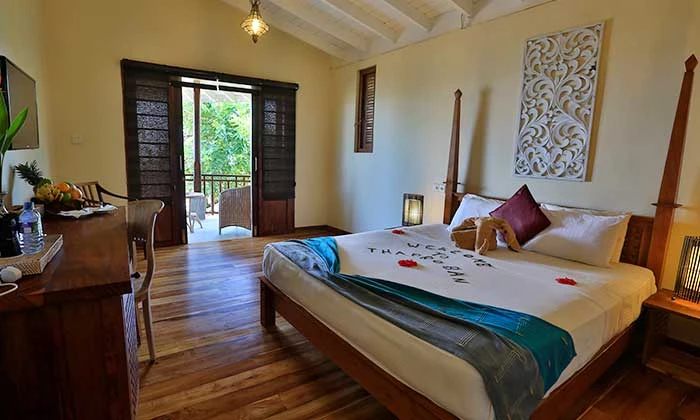
Thaproban Beach House - Galle
The Thaproban Beach house is a hotel set on the beach edge of this mysterious little cove, connected to so many legends, mysteries & epics, offering accommodation comprised of artistic suites, along with welcoming staff is a perfect spot to chill next to one of the finest beaches on the island, not to mention the renowned Unawatuna reef ideal for snorkeling and diving among the tropical corals of Unawatuna reef in the company of angle & parrot fish, admiring the many sea creatures that live in the crevices and also this is the only place where sighting have been made on baby Whale sharks, the biggest fish in the world and not a shark at all!
Thaproban Beach House - Galle
The Thaproban Beach house is a hotel set on the beach edge of this mysterious little cove, connected to so many legends, mysteries & epics, offering accommodation comprised of artistic suites, along with welcoming staff is a perfect spot to chill next to one of the finest beaches on the island, not to mention the renowned Unawatuna reef ideal for snorkeling and diving among the tropical corals of Unawatuna reef in the company of angle & parrot fish, admiring the many sea creatures that live in the crevices and also this is the only place where sighting have been made on baby Whale sharks, the biggest fish in the world and not a shark at all!
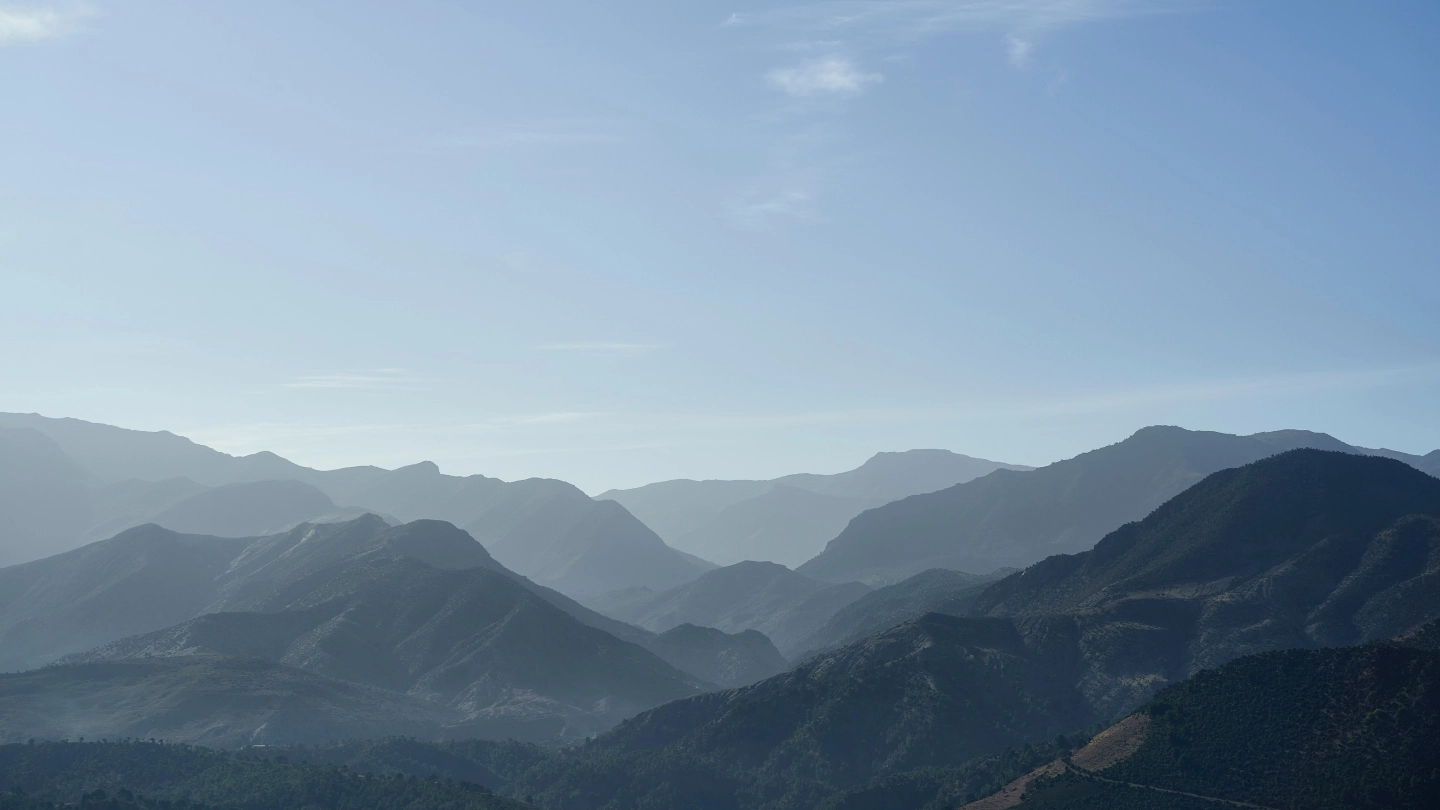
Why Adventure Asia
The company aims to serve soft/medium vacation options to the experienced adventure customer seeking uniquely styled expeditions, rather than traditional tourist-oriented itineraries that are prevalent.
Event Festival
Browse a month-by-month breakdown of suggested itineraries, seasonal activities, climate considerations and festivals.
At the peak of the tourist season when crowds are at their largest, many popular towns have special events such as the respected literary festival at Galle.
Duruthu Perahera
Held on the poya (full moon) day at the Kelaniya Raja Maha Vihara in Colombo, and second in importance only to the huge Kandy perahera (procession), this festival celebrates the first of Buddha’s three visits to Sri Lanka.

Thai Pongal
Thai Pongal is celebrated in the first month of the Tamil calendar. The festive season coincides with the period when the sun enters the zodiac sign of Capricorn (Makara).
Held in mid-January, this Hindu winter-harvest festival honours the sun god Surya. It is important to Tamils in Sri Lanka and South India. Look for the special sweet dish, pongal, which is made with rice, nuts and spices.

Weather and Climate

Since Sri Lanka is a tropical country, you can expect rain anytime of the year in different parts of the country. However, the two major rainy seasons are South-West monsoon (May to July) which predominantly affects the west & south coast of Sri Lanka and North-East monsoon (October to January) predominantly affecting the east coast.
The climate of Sri Lanka changes dramatically from central highlands to the coastal belt. For example at Nuwara Eliya, in the hills of Central Sri Lanka, has a temperature around 5-20°C throughout the year, whereas Hambanthota, located in the dry zone, has a temperature consistently around 30-35°C.
Travel FAQs
Essential Information
You should start planning the health aspect of your trip well in advance of departure, especially if you’re having vaccines for things like rabies or Japanese encephalitis, which need to be administered over the course of a month. Vaccinations and medical advice are available from your doctor or – more conveniently but expensively – a specialist travel clinic. It’s also crucial to have adequate medical insurance. Ensure that you’re up to date with the following standard vaccinations: diphtheria, tetanus, hepatitis A and polio. Other jabs you might consider are tuberculosis, meningitis and typhoid. The best way to avoid falling ill is to look after yourself. Eat properly, make sure you get enough sleep and don’t try to cram too much strenuous activity into your holiday, especially in the first few days before you’ve acclimatized to the sun, water and food, and while you’re probably still suffering jetlag. Luckily, standards of medical care in Sri Lanka are good. Most doctors speak English and a significant number have trained in Europe, North America or Australia. All large towns have a hospital, and you’ll also find private medical clinics in Colombo. If you pay for treatment, remember to get receipts so that you can claim on your insurance policy. All larger towns have well-appointed pharmacies (signed by a red cross on a white circle) and can usually produce an English-speaking pharmacist. If stuck, any reputable hotel or guesthouse should be able to put you in touch with a local English-speaking doctor.
Getting There
Bandaranaike International Airport (CMB), also known as Katunayake International Airport and Colombo Bandaranaike International Airport, is the main gateway to Colombo and in fact of Sri Lanka as a whole. Sri Lankan Airlines is the national airline of Sri Lanka. It operates international flights to and from Abu Dhabi, Bangalore, Bangkok, Beijing, Chennai, Coimbatore, Doha, Dubai, Delhi, Dammam, Frankfurt, Goa, Hong Kong, Hyderabad, Kuala Lumpur, London Heathrow, Male, Paris Charles de Gaulle, Karachi, Kuwait, Singapore and Tokyo Narita. Other airlines serving the country are Emirates, Qatar Airways, Royal Jordanian Airlines, Saudi Arabian Airlines, Martinair, Condor, Cathay Pacific and low cost airlines Air Arabia from Sharjah. Expo Aviation operates many charter service to and from the following destinations: Abu Dhabi, Australia, Bangalore, Bangkok, Beirut, Cairo, Kozhikode, Chennai, Chittagong, Kochi, Dhaka, Dubai, Hyderabad, Islamabad, Jakarta, Jeddah, Karachi, Kathmandu, Kuala Lumpur, Lahore, Malé, Manila, Mumbai, Muscat, several cities in Africa and Europe, Sharjah, Singapore, Tiruchirapalli and Thiruvananthapuram. Domestically, Expo Aviation and Aero Lanka offer scheduled flights to Jaffna and Trincomalee from Colombo. Chartered flights are also available. Mihin Lanka is a low cost airline which focuses on providing low cost flights from Colombo to Dubai and a number of cities in India. Its future base would have been Weerawila International Airport (WRZ), which would have been ready in 2009. However, the project faced significant environmental concerns, and was eventually scrapped. The site of the proposed airport was moved to Mattala, Hambantota, and a new Hambantota International Airport/Mattala International Airport is currently under construction there.
Getting Around
Local Transport Many Sri Lankan towns are small enough to walk around. In larger towns, you can get around by bus, taxi or three-wheeler. Bus Local buses go to most places, including villages outside main towns, for fares from Rs 10 to 50. Taxi Sri Lankan taxis are common in all sizable towns, and even some villages. Only some are metered (mostly in Colombo), but over longer distances their prices are comparable to those of three-wheelers, and they provide more comfort and security. You can count on most taxi rides costing around Rs 60 to 100 per kilometre. Hotels and restaurants can usually get you a ride for a modest cost. In Colombo you can count on taxis dispatched via apps such as Uber. Three-wheeler Three-wheelers, known in other parts of Asia as tuk-tuks, bajajs or autorickshaws, are waiting on nearly every corner. Use your best bargaining skills and agree on the fare before you get in. Some keen drivers will offer very extensive tours; use your discretion. As a rule of thumb, a three-wheeler should cost no more than Rs 200 per kilometre, but this can prove elusive depending on your negotiating skills. Note that three-wheelers with meters are somewhat prevalent in Colombo. Three-wheelers and taxis waiting outside hotels and tourist sights expect higher-than-usual fares. Walk a few hundred metres to get a better deal. Train Sri Lanka Railways runs the nation’s railways, and trains are a great way to cross the country. Although they are slow, there are few overnight or all-day ordeals to contend with. A train ride is almost always more relaxed than a bus ride. Costs are in line with buses: even 1st class doesn’t exceed Rs 1000. Most stations have helpful information windows where English is spoken. In addition, a couple of companies run private air-con train cars, which are attached onto regular trains. Although more expensive and less atmospheric than the 1st-class observation cars on Sri Lanka Railways, these private cars offer air-con and snacks and may have seats available when regular classes are already fully booked. Rajadhani Express runs to Kandy, Badulla, Galle and Matara, while Expo Rail serves Kandy and the Hill Country. There are three main rail lines in Sri Lanka. South from Colombo A scenic delight. Recently renovated, runs past Aluthgama and Hikkaduwa to Galle and Matara.
Visa and Permits
Nationals of the Maldives, Seychelles and Singapore may obtain a free visa on arrival. Maldivian and Singaporean nationals may enter for 30 days (extendable up to 150), whilst Seychellois nationals may enter for 60 days (but no more than 90 days per calendar year). Nationals of Cameroon, Republic of the Congo, Democratic Republic of the Congo, Cote d’Ivoire, Egypt, Gabon, Ghana, Guinea, Guinea-Bissau, Kenya, Liberia, Mali, Nigeria, Pakistan, Sierra Leone, Sudan, Syria and Uganda must obtain a visa in advance from a Sri Lankan diplomatic mission. All other nationals not specified above may obtain a visa on arrival, provided that they have completed the electronic travel authorization (ETA) procedure either prior to travel or on arrival in Sri Lanka. This electronic authorization is valid for 3 months, starting from the day it has been approved. It allows for two entries, which means you can enter the country twice during the 30 days entry (allowing for a break in e.g. Maldives). A visitor wishing to stay more than 30 days in Sri Lanka may apply for an extension. The short visit visa may be extended up to 90 days from the date of arrival at the first instance and further 90 days at the second instance.
Local Customs
There are several customs that (for Westerners) take a bit of getting used to. It is customary to remove shoesand wear conservative attire (i.e. no miniskirts, tank tops, short pants etc.) when visiting temples. It is also the custom to remove shoes before entering a home, though this is not as strictly followed as in places such as Japan. Never touch or pat the top of the headof Buddhist monks, including children who practice at a temple. Do not turn your backto (or be alongside) a Buddha statue when within a reasonable distance (observe what others are doing). This includes posing for photos. It’s OK to photograph a statue, but all persons should be facing it. Public nudityis illegal in Sri Lanka – nude/topless sunbathing and skinny dipping should be avoided, except in the private beach resorts which allow it. Although much latitude is given to tourists, it is more polite to use your right handwhen shaking hands, handing money and small objects, etc. Of course you can use both hands for something big and/or heavy. Be respectful to monks. There’s no particular etiquette for Westerners – just be polite. Always give them a seat on a crowded bus (unless you’re disabled or very elderly). It is highly controversial to discuss politics, particularly the Sinhalese/Tamil divide or the LTTE. The 26 year old civil war which ended in 2009 has seen thousands of attacks throughout the country, including suicide bombings and massacres which have killed scores of politicians and civilians on both sides alike. No photographyof sensitive locations (inside and outside), and inside of shopping malls and tea factories (outside OK). Be especially careful in Fort, Colombo (except on the beach). If soldiers are guarding something, it probably shouldn’t be photographed. Don’t rely on signs alone, as sometimes they are old or missing. For example, one end of a bridge may have a “No Photography” sign, but not the other. Seemingly innocuous public displays of affectionbetween lovers such as kissing and/or hugging may be culturally frowned upon as it is considered to be private behaviour but it is acceptable in functions and establishments designated for adults such as nightclubs, casinos and beach parties. Much lenience is given to foreigners and holding hands and public affection between parents and their children is not frowned upon.
Events and Festivals
January At the peak of the tourist season when crowds are at their largest, many popular towns have special events such as the respected literary festival at Galle. Duruthu Perahera Held on the poya (full moon) day at the Kelaniya Raja Maha Vihara in Colombo, and second in importance only to the huge Kandy perahera (procession), this festival celebrates the first of Buddha’s three visits to Sri Lanka. Thai Pongal Held in mid-January, this Hindu winter-harvest festival honours the sun god Surya. It is important to Tamils in Sri Lanka and South India. Look for the special sweet dish, pongal, which is made with rice, nuts and spices. Galle Literary Festival An annual event held in mid-January, this five-day festival brings together renowned Asian and Western writers. It is well regarded and attracts big names. A parallel fringe festival covers current issues and other creative pursuits. February The tourist crowds continue strong, with wintering Europeans baking themselves silly on the beaches. This is a busy month for Sri Lankans, with an important national holiday. Independence Day Sri Lanka gained independence on 4 February 1948 and this day is commemorated every year with festivals, parades, fireworks, sporting events and more across the nation. In Colombo, motorcades shuffle politicians from one event to the next. Navam Perahera First celebrated in 1979, Navam Perahera is one of Sri Lanka’s biggest and most flamboyant peraheras. Held on the February poya, it starts from the Gangaramaya Temple and travels around Viharamahadevi Park and Beira Lake in Colombo. March This is an important month for many of Sri Lanka’s Buddhists. You’ll see them observing Maha Sivarathri in the Ancient Cities areas and the portions of the west coast where they are in the majority. Maha Sivarathri In late February or early March the Hindu festival of Maha Sivarathri commemorates the marriage of Shiva to Parvati with all-night vigils and more. It’s the most important day for Shaivites, who comprise the majority of Sri Lanka’s Hindus. April Although Christians comprise only 6% of Sri Lanka’s population, secularised versions of Christian holidays are popular. Don’t be surprised when you see an Easter bunny at the mall. Aurudu (New Year) New Year’s Eve (13 April) and New Year’s Day (14 April) are nonreligious holidays. There is a period of a few hours between the old and new year called the ‘neutral period’ (Nonagathe); all activities are meant to cease. Over the days before and after, buses and trains are jammed as people go to their home villages. May The Yala monsoon blows in for five months, bringing huge rains from the Indian Ocean that drench the Hill Country and the beach towns in the southwest. Vesak Poya This two-day holiday commemorates the birth, enlightenment and death of the Buddha. Amid the festivities, the high point is the lighting of paper lanterns and displays of coloured lights outside every Buddhist home, shop and temple. Night-time Colombo is a riot of colours. Ramadan Muslims make up a small percentage of Sri Lanka’s population, but their prominence in commercial enterprises means that Muslim holidays are conspicuously observed. Islamic holidays move with the lunar calendar; in coming years, the annual Muslim fast takes place between the following dates: 15 May to 14 June 2018; 5 May to 4 June 2019. June Sri Lanka’s Buddhists barely have a chance to catch their breath after Vesak before another major religious event occurs – and they’ll want to catch their breath… Poson Poya The Poson poya day celebrates the bringing of Buddhism to Sri Lanka by Mahinda. In Anuradhapura there are festivities in the famous temples, while in nearby Mihintale thousands of white-clad pilgrims ascend the lung-busting 1843 steps to the topmost temple. Id ul-Fitr Id ul-Fitr is the traditional end of Ramadan, the Muslim month of fasting, and this important holiday sees Muslims travelling to their home villages. Islamic holidays move with the lunar calendar; in coming years, Id ul-Fitr falls on the following dates: 14 June 2018 and 4 June 2019. July Light-bulb vendors do a huge business as Buddhists gear up for Esala Perahera, which begins at the end of the month. Light displays are an integral part of the Kandy festivities. Vel This festival is held in Colombo and Jaffna. In Colombo the gilded chariot of Murugan (Skanda), the god of war, is ceremonially hauled from Pettah to Bambalapitiya. In Jaffna the Nallur Kandaswamy Kovil has a 25-day festival. Kataragama Another important Hindu festival is held at Kataragama, where devotees put themselves through a whole gamut of ritual masochism. It commemorates the triumph of the six-faced, 12-armed war god Skanda over demons here. Esala Poya This day celebrates Buddha’s first sermon as well as the arrival of the tooth relic in Sri Lanka. This latter milestone is why the ceremonies in Kandy – home of the relic – are especially vibrant and intense. August The Kandy Esala Perahera is important, but smaller versions are held across Sri Lanka. Many celebrations feature dancers and other performers such as stilt-walkers who practise all year. Kandy Esala Perahera The Kandy Esala Perahera, Sri Lanka’s most spectacular and prominent festival, is the climax of 10 days and nights of celebrations during the month of Esala. This great procession honours the sacred tooth relic of Kandy and starts in late July. Nallur Festival Jaffna’s Nallur Kandaswamy Kovil is the focus of an enormous and spectacular Hindu festival over 25 days in July and August, which climaxes on day 24 with parades of juggernaut floats and gruesome displays of self-mutilation by entranced devotees. September The main tourist season comes to an end as the northern hemisphere summer ends. It’s a good time to enjoy a less-crowded Sri Lanka. On the east coast the waves are also abating. Eid ul-Adha A three-day Islamic festival and part of the Haj or the pilgrimage to Mecca. It recalls Abraham’s willingness to sacrifice his son for God. Islamic holidays move with the lunar calendar; in coming years, Eid ul-Adha falls on the following dates: 1 September 2017, 21 August 2018, 11 August 2019. October This is a month of meteorological mystery as it falls between the two great monsoon seasons. Rains and squalls can occur any place, any time. These are the final days of peak east-coast surfing. Deepavali The Hindu festival of lights takes place in late October or early November. Thousands of flickering oil lamps celebrate the triumph of good over evil and the return of Rama after his period of exile. November The second-to-last month of the year is a time of waiting: waiting for the tourist throngs, waiting for Christmas, waiting for the coming monsoon rains in the dry North and East. European Film Festival Sri Lanka’s nascent film industry gets its chance to show off during this festival (www.europeanfilmfestsrilanka.com) held at various venues in Colombo. It’s usually held in October. December Sri Lanka’s second annual monsoon season, the Maha, brings huge rains to the northeast part of the island. This is not the time to plan a Jaffna beach holiday. Adam’s Peak The pilgrimage season, when pilgrims of all faiths (and the odd tourist) climb Adam’s Peak near Ella, starts in December and lasts until mid-April. The trek begins shortly after midnight so that everyone can be in place for sunrise. Unduvap Poya This full-moon day commemorates Sangamitta, who in 288 BC brought a cutting from the sacred Bodhi Tree in India to Anuradhapura. The resulting tree, the Sri Maha Bodhi, is considered the oldest living, human-planted tree in the world. The ceremonies attract thousands in their finest. Christmas Outside of Sri Lanka’s Christian communities – mostly around Colombo – this day has become a popular secularised holiday. Ersatz versions of Western Christmas traditions can be found everywhere, from bone-thin Santas in strange masks to garish artificial trees. Poya Every poya (full moon) day is a holiday. Poya causes buses, trains and accommodation to fill up, especially if it falls on a Friday or Monday. No alcohol is supposed to be sold on poya days and many establishments close. Some hotels discreetly provide cold beer ‘under the table’. Note that the official full-moon day for poya does not always coincide with the same designated full-moon day in Western calendars. Because of the religious time used to calculate the exact moment of full moon, the poya day may be a day earlier or later than that shown on regular lunar calendars.
Best time to visit
Sri Lanka’s climate is tropical and consists of distinct wet and dry seasons. Generally speaking, the coastal areas of Sri Lanka enjoy temperatures averaging 28°C (82°F) while the upland areas are cooler and more temperate, with a yearly average around 16-20°C (60-68°F). The best time to visit Sri Lanka depends on where you go.
The best time to visit the southwest region of Sri Lanka
The best time to visit the southwest region of Sri Lanka is from December to April. During this time, the weather is warm; the city of Galle on the southwestern tip enjoys an average high of 29°C (84°F) for example. However, the Yala monsoon brings abundant rainfall to the southwest region from May to September, and to November in some coastal cities.
The best time to visit the northeast region of Sri Lanka
The best time to visit the northeast region of Sri Lanka is from May to September. The sun-drenched Trincomalee, a port city on the northeast coast of Sri Lanka, enjoys a balmy temperatures of 30°C (86°F) with little rain during this period. However, the Maha monsoon affects Sri Lanka’s northeast region from October to January.
The best time to visit Kandy and the central hill region
Kandy is a major tourist destination in the Central Province, a mountainous area of Sri Lanka. Sitting at an elevation of 500m (1,600ft), Kandy is considerably cooler than the coastal regions of Sri Lanka with temperatures averaging between 23-26°C (73-79°F) year-round. Rainfall is expected throughout the year, but it tends to be heavy in October and November. The best time to visit Kandy is from January to March as the weather is mild and the rainfall is at its lowest. Please note that there is also an inter-monsoonal period in October and November during which rain and thunderstorms occur frequently across the island. So always pack an umbrella with you.
Is safe to travel to Sri Lanka, are there places to avoid?
The dangers and annoyances listed in the following are sorted in the order of possible occurrence. During an emergency: use emergency hot-line numbers 119 or 118 Avoid these Use your best judgment when breaking ice and be careful when talking about sensitive subjects such as religion,politics etc Improper behavior inside temples may lead to deportation Avoid use of prohibited fishing gears like spear gun Religious tattoos / images Tattoos or other images (t-shirt) of religious figures may be considered disrespectful or even illegal. Sri Lankan police may deport people sporting tattoo of Buddha or any other tattoos which can be interpreted as having religious significance. It is better to cover up such a tattoo
Spice garden & Ayurveda medicine scam
You may be taken around for visit to a spice garden and afterwards to a shop selling natural products, most of the shops sell these spurious products at inflated prices. Mostly the ride there is for free, but be prepared to find yourself in the middle of nowhere just to be presented with these expensive products. The ayurvedic oils may contain recycled engine oil and other harmful substances which may cause irritation to the skin. No local visits these so called Spice gardens. There are real shops that you can buy Ayurvedic medicine from, and they are properly regulated by the government.
Con men, touts & pretenders
First time travelers to Sri Lanka may find themselves the victim of scams. Therefore, if you are a first time visitor to Sri Lanka, don’t admit it, and ignore all unnecessary approaches and unsolicited advice from strangers strolling around and offering their help to tourists. They may approach you by saying “You remember me?” or by telling you they work at your guest house or hotel, or they introduce themselves as police, some high official, a professional (e.g. airline pilot) or in charge of a location (like a bus terminal). This is of course all rubbish and just a conversion starter to trick you into buying something or taking an overpriced tour with them. Using the services of a tout for accommodation, local travel, etc. will most likely increase the price steeply. Don’t give away money to people on the street. Con men using children to beg for cash from tourists is prevalent in some tourist spots. Some people may approach by saying they have a grievance and ask for monetary help. Don’t entertain unnecessary questions and offers, just ignore them without making any eye contact and walk away. Don’t trust the fake IDs and certifications.
Credit card scams
Be vigilant when you use credit cards in hotels and stores. Always pay in cash if possible and use credit cards only in emergencies. Withdrawing cash at ATM is much safer and cash can be withdrawn from ATMs in all major towns. Avoid ATM machines situated in isolated areas, as there is a possibility of card skimming. e-Visa scams Many websites offer e-visa to Sri Lanka at exorbitant prices. Make sure that you are applying at the original government website, which is http://www.eta.gov.lk.
War & Terrorism
Sri Lanka’s lengthy and bloody civil war ended in May 2009, when the government forces finally wiped out the LTTE. However, there may be undiscovered land mines in some remote areas, and the facilities in northern (and some parts of the east) cities and towns are war torn. The Sri Lanka Army is currently engaged in rapidly clearing landmines laid out by LTTE separatists. Bombings and assassinations were a firm part of both sides in the conflict, and there is heavy security in all sensitive locations. While the separatists have never targeted tourists there have been deaths, notably in a landmine explosion at Wilpattu National Wild Park in 2006, and some have been wounded by terrorist actions. In general, though, traffic accidents kill more people than terrorism (although according to statistical estimates, in the year 2005 for example, approximately 2300 people died in Sri Lanka due to road traffic crashes, and while the road traffic death rate in Sri Lanka is considered low when compared with other low-income countries, it has been steadily rising for several years). Violent crime is not usually any more serious a problem for tourists in Sri Lanka than it is anywhere. There has been an increase in violent crimes involving tourists in the past few years, but it is still very rare. In June of 2009, the Sri Lankan government lifted travel restrictions after the military defeat of rebel insurgents in the north of the country, though it is advisable to check with the local travel advisory bureau in your country if there is any doubt. In April of 2019, terrorist attacks had occurred in places of worship and hotels. The death toll was approximately 250. Many foreign governments had issued travel advisory warnings to necessary travel only and that attacks could occur without warning. Since May 26, 2019, governments of countries, such as China, Germany, India and Switzerland have lifted travel advisories due to returning normalcy, whilst still advising travelers to remain cautious.
DO’S AND DON’T ‘S
Do’s Use open-ended questions and watch body language to understand how a Sri Lankan feels about something. They are unlikely to speak openly when they disagree with something. Treat Sri Lankan elders with visible respect. For example, address them first and defer to their opinion. Sri Lankans tend to be reluctant to criticize. It is best to reciprocate this through remaining polite, modest and gentle in order to give and avoid losing facefor both yourself and your Sri Lankan counterpart. Be sensitive and understanding, especially with respect to the recent civil conflict. Sri Lankans are likely to warm to those who exhibit sympathy where it is appropriate. Do not’s Avoid raising your voice or showing strong displays of negative emotion. Sri Lankans generally view this as a loss of control. Drawing parallels between Sri Lanka and India may offend your Sri Lankan counterpart. Sri Lankans take great pride in being culturally and politically distinct from India. Politics and the civil conflict in Sri Lanka are sensitive topics. It is best not to initiate a conversation on the matter unless you know the person well. If the topic does arise, be sensitive about the grief and trauma that your Sri Lankan counterpart may have experienced. A person’s religious affiliations are also a sensitive topic, avoid discussing alternative religious views unless you know the person well. Avoid touching or sitting on any image or statue of the Buddha.
WHAT MONEY SHOULD I TAKE?
ATMs available in cities and large towns. Credit cards accepted at most midrange and all top-end hotels. ATMs ATMs are easily found in towns and cities of any size. ATMs often issue Rs 5000 notes. Try to break a few as soon as possible as small vendors may not accept large notes: you can usually do this inside the bank that operates the ATM. Cash Any bank or exchange bureau will change major currencies in cash, including US dollars, euros and British pounds. Change rupees back into hard currency at the airport (before security, there are no exchange counters after) prior to leaving, as even nearby countries may not exchange Sri Lankan currency. Credit Cards MasterCard and Visa are the most commonly accepted credit cards. Cards are generally accepted at most midrange and all top-end hotels and restaurants. Currency The Sri Lankan currency is the rupee (Rs), which is divided into 100 cents; pricing in cents is rare. Rupee coins come in denominations of one, two, five and 10 rupees. Notes come in denominations of 10, 20, 50, 100, 200, 500, 1000, 2000 and 5000 rupees. For current exchange rates, see www.xe.com. Moneychangers Money changers can be found in Colombo and major tourist centres. Their rates are competitive, but choose carefully, as money-exchange scams abound. Stick to banks or reputable offices, such as those at the airport. ATMs are safer and more reliable.
What's your refund policy ?
Below is our cancellation and refund policy: 🔸 60 days prior to arrival date: No cancellation charge for the land cost. We guarantee 100% of the land cost back. The airline cancellation fees are applied according to the airline's policy. 🔸 59 - 30 days prior to arrival date: 5% cancellation charge + airfare cancellation fees 🔸 29 - 15 days prior to arrival date: 10% + airfare cancellation fees. 🔸 14 - 8 days prior to arrival date: 40 + airfare cancellation fees. 🔸 7 days prior to arrival date: 100% 🔸 No show: 100% Please note that the domestic flight tickets in the package are non-refundable




